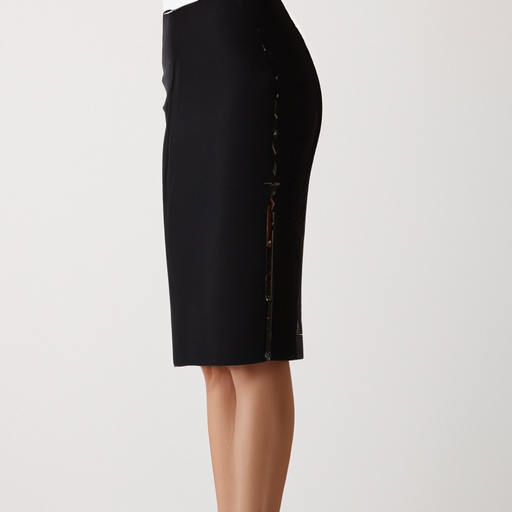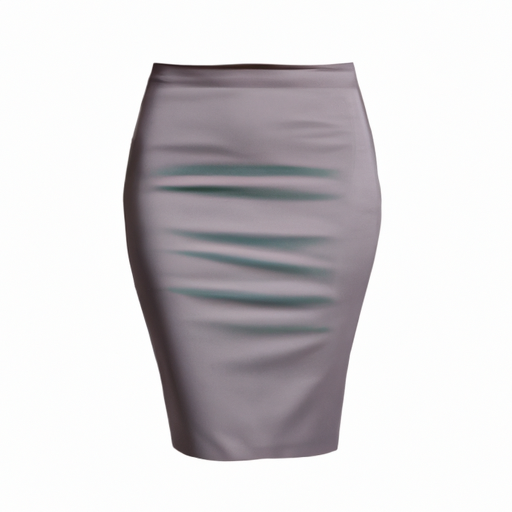The Pencil Skirt’s Timeless Evolution and Empowering Journey
Introduction
The pencil skirt, a paragon of elegance and versatility, emerged as a groundbreaking fashion innovation in the mid-20th century. Characterized by its close-fitting design that gently follows the contours of the body, this timeless garment transformed women’s fashion by defying the bulky silhouettes of its era. Introduced by Christian Dior in the 1950s, the pencil skirt brought a touch of modernity and sophistication, challenging traditional hemlines and heralding a new era of tailored femininity. Its initial role as office attire expanded as it seamlessly transitioned from professional wear to evening chic. This sleek masterpiece not only celebrated the female form but also empowered women in an evolving society. Through the decades, the pencil skirt’s enduring charm continues to captivate fashion enthusiasts, embodying the fusion of classic style and contemporary trends.

Elegance Redefined: The Pencil Skirt’s Enduring Allure and Evolution in Fashion
In the grand tapestry of fashion, certain garments emerge as timeless classics, transcending eras and trends. The pencil skirt, with its sleek silhouette and versatile charm, holds an esteemed place within this exclusive collection. This article delves into the rich history, transformative evolution, and lasting impact of the pencil skirt on the world of fashion, highlighting its journey from a symbol of empowerment to a ubiquitous wardrobe essential.
A Glimpse into the Past: Origins and Historical Significance
The roots of the pencil skirt can be traced back to the late 1940s and early 1950s. In the aftermath of World War II, there was a shift in societal norms, and women’s roles began to expand beyond the domestic sphere. With a newfound sense of independence and empowerment, women sought garments that combined elegance with practicality. Enter the pencil skirt—a narrow, form-fitting skirt that accentuated the natural curves of the body.
The pencil skirt’s origin can be attributed to the French designer Christian Dior, who introduced the “H-Line” collection in 1954. This collection included the iconic pencil skirt, which revolutionized women’s fashion by deviating from the voluminous styles of the previous decades. With its tailored fit and knee-length hemline, the pencil skirt became a symbol of sophisticated femininity and modernity.

The Evolution: From Office Staple to High Fashion
As the 1950s progressed, the pencil skirt solidified its status as a versatile wardrobe staple. It seamlessly transitioned from office wear to evening attire, adapting to various occasions with ease. Paired with a tailored blouse and blazer, the pencil skirt exuded professionalism, making it a favored choice among working women. Conversely, when paired with a silk top and statement jewelry, it effortlessly transformed into an elegant option for social engagements.
The 1960s brought about a new wave of fashion experimentation, and the pencil skirt evolved alongside these changes. Hemlines fluctuated, offering options for both the daring and the demure. Additionally, the era’s penchant for bold prints and vibrant colors breathed new life into the classic silhouette, showcasing its adaptability to the prevailing trends.

Pencil Skirt Renaissance: The Power Suit Era
The 1980s marked the pinnacle of the power suit, and the pencil skirt played a pivotal role in this iconic ensemble. Women in the corporate world embraced the power suit—a symbol of authority and ambition—often consisting of a blazer and a matching pencil skirt. This era redefined the pencil skirt’s connotations, aligning it with professionalism, confidence, and assertiveness.
Fashion icons like Princess Diana and working women in popular television shows, such as “Dynasty,” catapulted the pencil skirt to iconic status during this time. The pencil skirt’s adaptability to various body types and its ability to exude both elegance and authority ensured its enduring relevance.
Contemporary Interpretations: Runways and Beyond
As fashion continues to evolve, so does the pencil skirt. Contemporary designers have embraced this timeless silhouette, reimagining it with innovative fabrics, textures, and embellishments. The runway has seen pencil skirts crafted from leather, lace, and even denim, proving that the classic design can be both timeless and cutting-edge.
In recent years, there has been a shift towards sustainability and conscious consumption in the fashion industry. The pencil skirt, with its longevity and versatility, aligns perfectly with these values. Many fashion enthusiasts are now seeking investment pieces that can withstand fleeting trends, making the pencil skirt an attractive choice.

Empowerment and Expression: The Pencil Skirt’s Message
Beyond its aesthetic appeal, the pencil skirt has conveyed a powerful message throughout its history. From its inception as a symbol of women’s liberation in the 1950s to its role in the power suits of the 1980s, the pencil skirt has consistently represented women’s agency and autonomy. Its ability to enhance the wearer’s confidence and convey a sense of empowerment continues to be a defining aspect.
In conclusion, the pencil skirt’s journey through time is a testament to its remarkable adaptability and enduring charm. From its humble beginnings as a post-war innovation to its present status as a fashion staple, the pencil skirt has defied fleeting trends and maintained its relevance. As fashion landscapes evolve, the pencil skirt’s legacy stands as a reminder that elegance and empowerment are eternally intertwined in the world of style.

1 thought on “Sculpting Elegance: The Pencil Skirt’s Timeless Evolution and Empowering Journey”